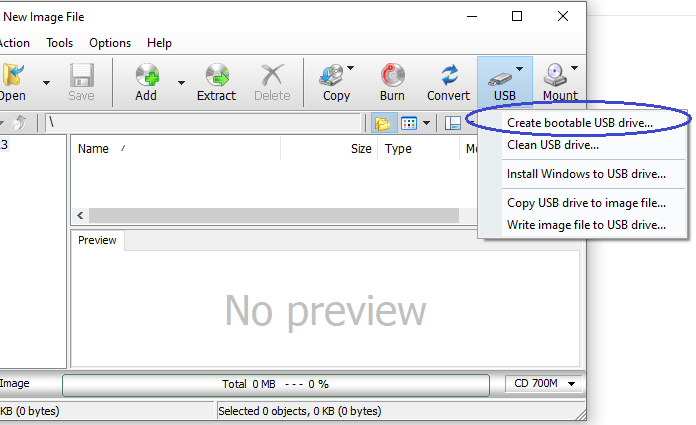
Type the following command to copy all the Windows 10 files to the USB flash drive and press Enter: xcopy E:\*.* X:\ /E /F /H Type the following command to update the volume boot code for the USB flash drive and press Enter: bootsect /nt60 X: Type the following command to access the boot folder and press Enter: cd boot Type the following command to access the Windows 10 ISO file and press Enter: E: Type the following command to exit DiskPart and press Enter: exit Type the following command to determine the drive letter for the mounted ISO file and press Enter: list volume

Type the following command to launch DiskPart again and press Enter: diskpart In the command, make sure to update the path with the location where you have stored the ISO file. Type the following command to mount the ISO file and press Enter: PowerShell Mount-DiskImage -ImagePath "C:\path\to\Windows10.iso" Type the following command to quit the tool and press Enter: exit In the command, change X for any available letter you want to use. Type the following command to assign a volume and a drive letter for the USB flash drive and press Enter: assign letter=X You can see a full step-by-step guide here.Quick tip: If you’re creating a bootable media for a device that uses UEFI, you’ll need to format the drive using the “FAT32” file system, instead of “NTFS” with the format fs=FAT32 quick command. Run the tool, select your desired distribution, browse to your downloaded ISO file, and choose the USB drive you want to use. There are many tools that can do this job for you, but we recommend a free program called Rufus-it’s faster and more reliable than many of the other tools you’ll see recommended, including UNetbootin.ĭownload the Linux distribution you want to use in. RELATED: How to Create a Bootable Linux USB Flash Drive, the Easy Way RELATED: How to do a Clean Install of Windows 10 the Easy WayĪlternatively, if you’re installing Windows 10, you can download an ISO or burn Windows 10 installation media directly using Microsoft’s Media Creation Tool.


Provide the ISO file and a USB flash drive and the tool will create a bootable drive. If you don’t have one, you can download Windows 10, 8, or 7 installation media for free - you’ll need a legitimate product key to use them, though. You’ll need a Windows installer ISO file to run this tool. Use Microsoft’s own Windows USB/DVD download tool to create a bootable drive you can install Windows from. RELATED: Where to Download Windows 10, 8.1, and 7 ISOs Legally And if your desktop computer doesn’t support USB 3.0 you can always upgrade it to add support. Don’t worry about compatibility, these faster drives are fully compatible with an old USB 2.0 system, you just won’t get the speed boosts.


 0 kommentar(er)
0 kommentar(er)
